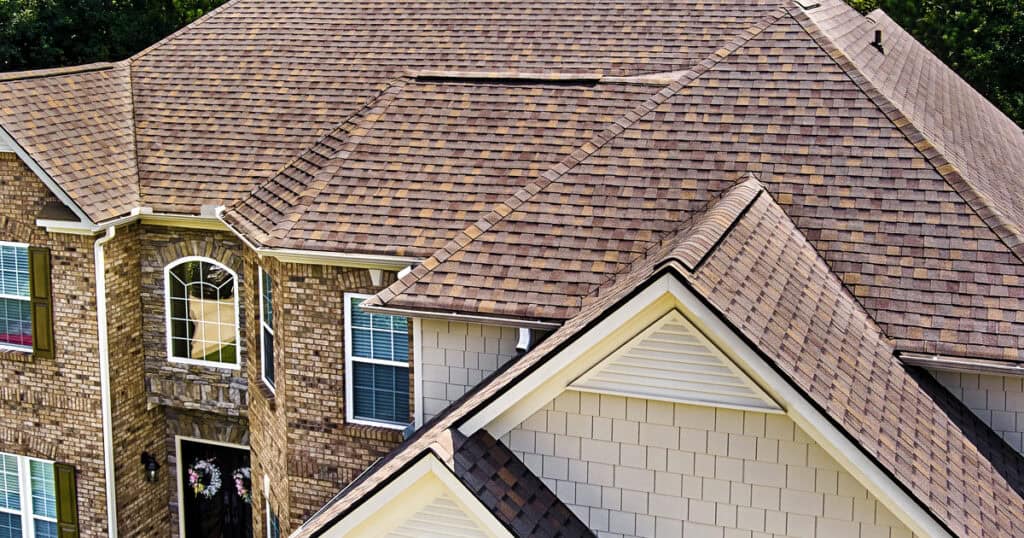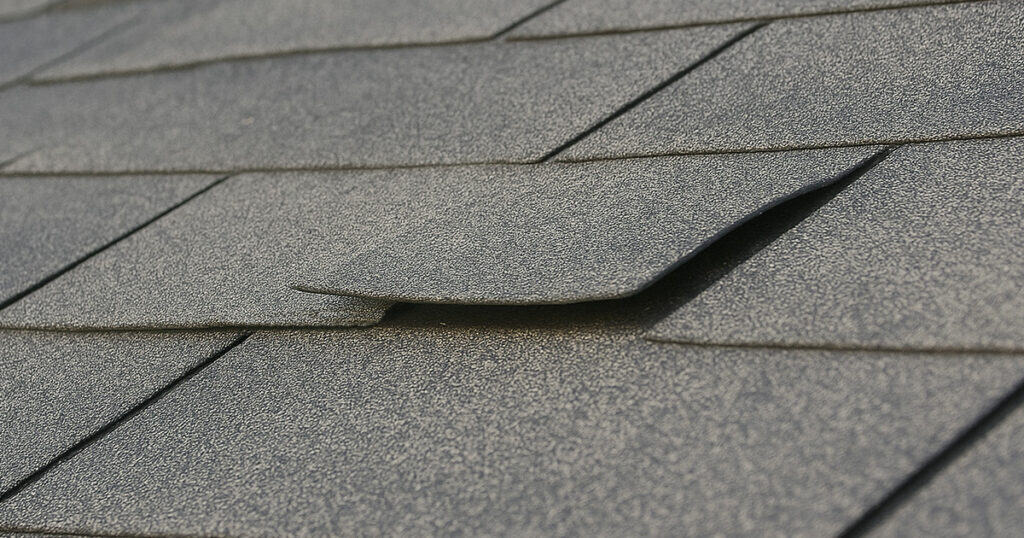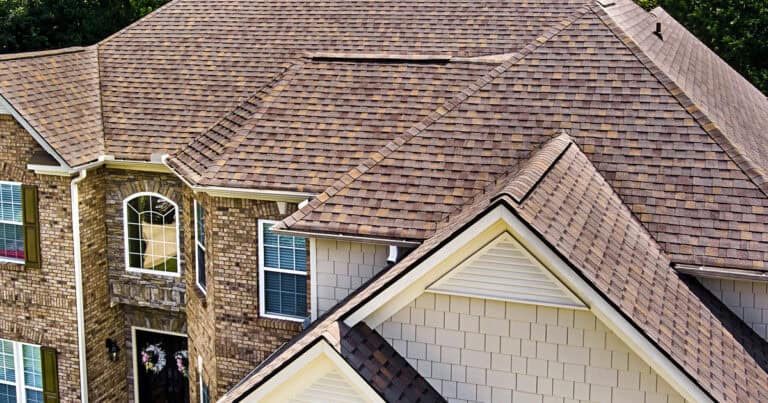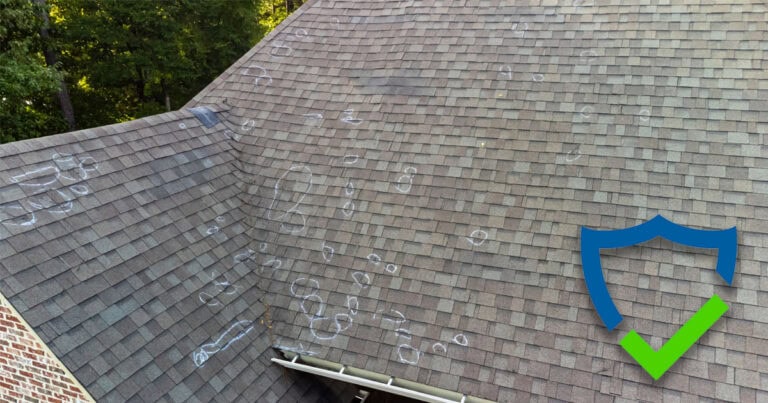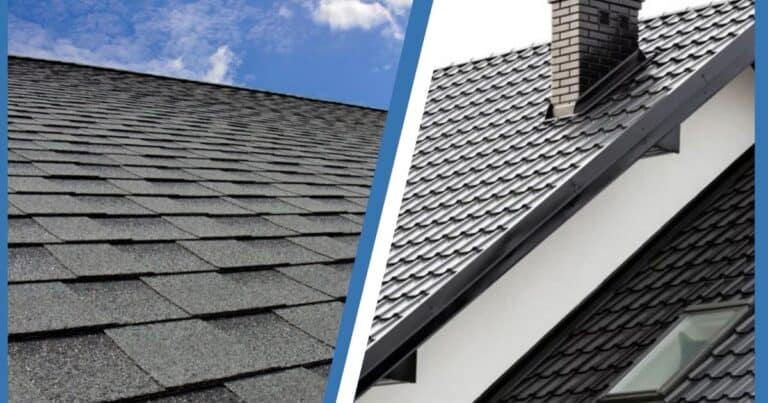Picture this: You’re enjoying your morning coffee when you notice a mysterious water stain creeping across your ceiling like an unwelcome houseguest. Sound familiar? If you’re nodding along, you’re not alone. I’ve seen countless homeowners in North Texas learn the hard way that ignoring early warning signs of roof damage can turn a simple repair into a financial nightmare.
Your roof is basically the unsung hero of your home—quietly protecting you from scorching Texas summers, surprise hailstorms, and those infamous blue northers that roll through unexpectedly. But here’s the thing: even the toughest roofs need attention, and recognizing the early warning signs can save you thousands of dollars down the road.
At RidgeCore Roofing, we’ve seen how small problems can quickly become major headaches when left unchecked. That’s why we’re sharing these critical warning signs to help you protect your investment.
Why Texas Roofs Face Unique Challenges
Before we dive into the warning signs, let’s talk about why living in the Lone Star State puts extra stress on your roof. Between the intense UV rays that can crack and warp materials, sudden temperature swings that cause expansion and contraction, and severe weather events that seem to pop up out of nowhere, Texas roofs work overtime.
I remember working with a homeowner who thought his roof was invincible—until Hurricane Harvey taught him otherwise. The lesson? Proactive roof maintenance isn’t just smart; it’s essential for protecting your biggest investment.
The 5 Critical Roof Repair Signs You Need to Know
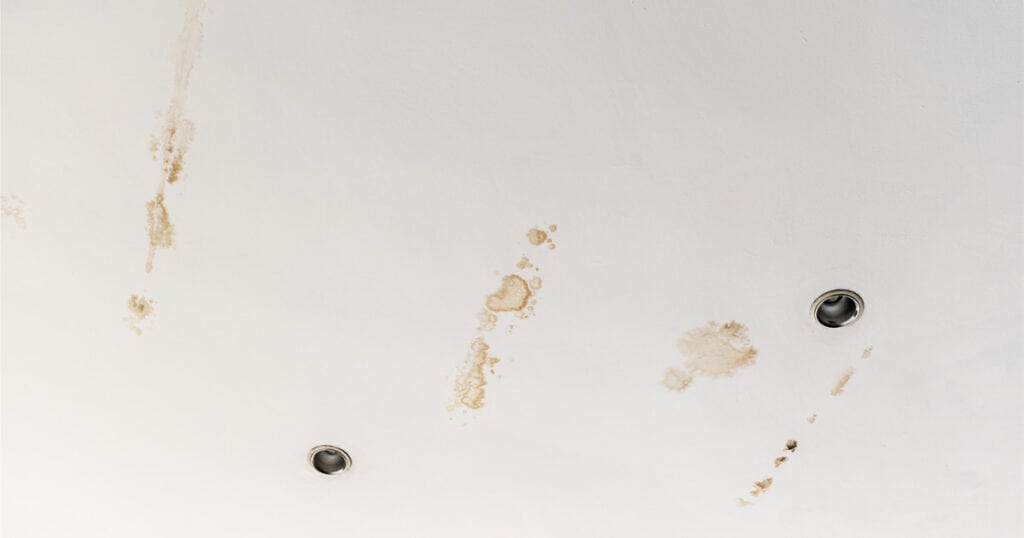
1. Water Stains and Discoloration on Ceilings or Walls
This is often the first roof repair sign homeowners notice, and for good reason—it’s pretty hard to miss a brown or yellow stain spreading across your pristine white ceiling. These stains are like your roof’s way of waving a red flag and shouting, “Hey, we’ve got a problem up here!”
What to look for:
- Circular or irregular brown/yellow stains
- Peeling paint or wallpaper
- Musty odors in certain rooms
- Visible water droplets during or after rain
The tricky part? Water stains don’t always appear directly below the leak. Water has a sneaky way of traveling along rafters and joists before finally dripping down, sometimes several feet away from the actual source.
Pro tip: If you notice any discoloration, don’t wait. Even small leaks can lead to mold growth, structural damage, and expensive repairs. We’ve seen minor leaks turn into major renovations when left unchecked.
2. Missing, Cracked, or Curling Shingles
Your shingles are your roof’s first line of defense, and when they start showing their age, it’s time to pay attention. Think of them like the armor protecting your castle—when pieces start falling off, you’ve got vulnerabilities that need addressing.
Signs of shingle damage:
- Shingles lying in your yard after storms
- Visible cracks or splits in the shingles
- Edges that are curling upward (called “cupping”)
- Granules collecting in gutters or downspouts
Here’s something interesting: hail damage is particularly common in North Texas, but it’s not always immediately obvious. According to the National Weather Service, those seemingly innocent ice balls can create micro-fractures that don’t show up until months later when the shingles start failing.
Quick check: Walk around your house after any severe weather and look for obvious damage. If you see missing shingles or obvious cracks, these are clear roof repair signs that need immediate attention.
Those tiny granules on your asphalt shingles aren’t just for show—they’re actually protecting the underlying material from UV damage and weathering. When they start disappearing, your shingles become vulnerable to rapid deterioration.
3. Granule Loss and Bare Spots on Shingles
What granule loss looks like:
- Excessive granules in gutters and downspouts
- Shiny or smooth patches on shingles
- Uneven coloring across the roof surface
- Bald spots that expose the mat underneath
We always tell homeowners to check their gutters after cleaning them. A few granules are normal, especially on newer roofs, but if you’re scooping out what looks like coarse sand, that’s a red flag.
The Texas factor: Our intense summer sun accelerates granule loss, making regular inspections even more critical. A roof that might last 25-30 years in a milder climate could need attention sooner here.
4. Damaged or Deteriorating Flashing
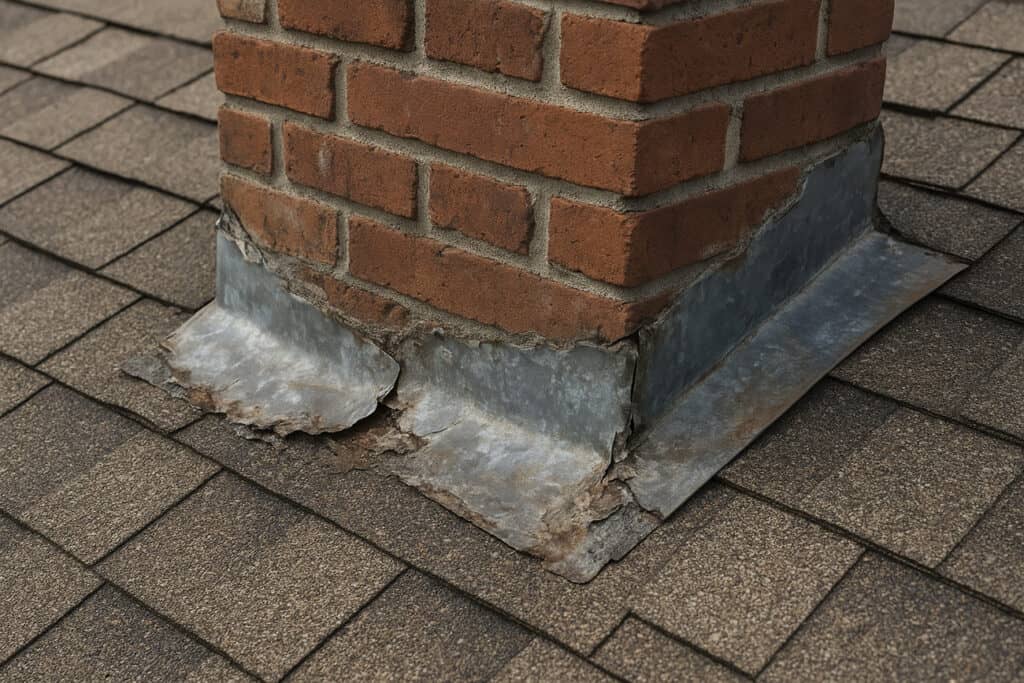
Flashing is probably the most underappreciated component of your roofing system. These thin pieces of metal redirect water away from vulnerable areas like chimneys, vents, and where different roof planes meet. When flashing fails, water intrusion is almost guaranteed.
Common flashing problems:
- Rust or corrosion on metal flashing
- Loose or missing sections
- Cracks in sealant around flashing
- Gaps where flashing meets the roof surface
Here’s a story that drives this point home: We worked with a homeowner who noticed some minor discoloration around his fireplace but ignored it, thinking it was just normal aging. Six months later, he discovered extensive water damage behind the wall because the chimney flashing had failed. What could have been a $200 repair turned into a $5,000 renovation. This is why addressing roof repair signs early is so crucial.
Key areas to inspect:
- Around chimneys and skylights
- Where roof planes intersect
- Around ventilation penetrations
- Along roof edges and valleys
5. Sagging or Uneven Roof Lines
This is the roof repair sign that should have you on the phone with a roofing contractor immediately. A sagging roof indicates potential structural problems that go beyond simple surface repairs.
What to watch for:
- Visible dips or waves in the roof line
- Doors or windows that suddenly don’t close properly
- Cracks in interior walls, especially where walls meet ceilings
- A “bouncy” feeling when walking on certain areas of the roof
Important note: If you notice any sagging, don’t attempt to inspect or repair it yourself. Structural issues require professional assessment and could indicate serious safety hazards.
Frequently Asked Questions About Roof Repair Signs
What are the most common roof repair signs to watch for?
The most common roof repair signs include water stains on ceilings, missing or damaged shingles, granule loss, deteriorating flashing, and any structural sagging. These issues often start small but can quickly escalate if not addressed promptly.
Hail damage can be sneaky, especially if you’re not sure what to look for. Here’s what I recommend checking after any significant hailstorm:
- Obvious signs: Missing shingles, visible cracks, or dents in metal components
- Subtle indicators: Granule loss, small fractures that might not be immediately visible, or soft spots where hail impacted
- Check your gutters: Excessive granules or small pieces of roofing material
- Look at other surfaces: Dents in air conditioning units, mailboxes, or cars often indicate hail large enough to damage roofing
Do I need a permit for roof repairs?
In most North Texas municipalities, minor roof repairs typically don’t require permits. However, if you’re replacing more than 25% of your roof or making structural changes, you’ll likely need one. Check with your local building department to verify requirements for your specific area.
Generally permit-free repairs:
- Replacing individual shingles
- Minor flashing repairs
- Gutter work
- Small leak repairs
Typically requires permits:
- Full roof replacement
- Structural repairs
- Adding skylights or vents
- Changing roof materials
Always check with your local building department to be sure. Trust me, it’s better to ask upfront than deal with complications later.
Will my homeowner’s insurance cover repair costs for storm-related roof damage?
This is probably the most common question we get, and the answer depends on several factors:
Typically covered:
- Sudden damage from storms, hail, or wind
- Falling tree damage
- Fire damage
Usually not covered:
- Gradual wear and tear
- Damage from lack of maintenance
- Cosmetic issues that don’t affect function
Pro tip: Document everything with photos and contact your insurance company immediately after storm damage. Many policies have time limits for filing claims. The Texas Department of Insurance provides helpful resources for understanding your coverage and filing claims properly.
How often should I schedule a professional roof inspection to catch problems early?
Annual inspection timing:
- Spring: Check for winter damage and prepare for storm season
- Fall: Assess summer heat damage and prepare for winter
Additional inspections:
- After any severe weather (hail, high winds, tornadoes)
- If you notice any of the warning signs mentioned above
- Before listing your home for sale
What is the typical cost range for minor roof repairs?
The average cost for roof repair in Collin County (including Frisco) is between $210 and $1,582 depending on the scope and complexity. Most minor repairs, such as shingle replacement, flashing, and leak patching, fall in the $200–$800 range for standard homes.
Roof repair costs in North Texas vary widely depending on the issue:
| Repair Type | Typical Cost Range (Frisco, TX, 2025) |
|---|---|
| Individual shingle replacement | $300 – $800 |
| Flashing repair | $350 – $1,200 |
| Minor leak repair | $900 – $1,160 |
| Gutter repair | $300 – $1,500 |
| Vent/penetration sealing | $300 – $1,200 |
Gutter repairs and vent sealing are typically on the lower end unless extensive replacement or custom work is required.
Important considerations:
- Prices may increase for steep roofs, premium materials, or emergency service
- For larger repairs or more complex issues, costs can approach or exceed the upper end of these ranges
- These figures do not include permit fees, taxes, or general contractor markups, which may apply in some cases
- Emergency roof repair services typically cost 25-50% more, especially during storm season when demand is high
What is the typical cost range for minor roof repairs?
Speed matters when it comes to roof repairs. Here’s our urgency scale:
Immediate attention (within 24-48 hours):
- Active leaks
- Missing shingles after storms
- Structural sagging
- Severe flashing damage
Within a week:
- Minor leaks or stains
- Loose shingles
- Granule loss
- Small flashing issues
Within a month:
- Preventive maintenance
- Gutter repairs
- Minor cosmetic issues
Remember: Every day you wait gives water more time to cause damage. What starts as a $300 repair can quickly become a $3,000 problem.
Can I repair my roof myself, or should I hire a licensed professional?
While we appreciate the DIY spirit, roofing work comes with significant risks. Here’s our honest assessment:
DIY-friendly tasks:
- Cleaning gutters (with proper safety equipment)
- Applying roof sealant to small areas
- Replacing a few loose shingles (if you’re comfortable on ladders)
Professional-only work:
- Structural repairs
- Extensive leak repairs
- Flashing replacement
- Any work involving electrical components
Safety considerations:
- Roofing injuries are common and often serious – the Occupational Safety and Health Administration (OSHA) reports that falls from roofs are among the leading causes of construction fatalities
- Insurance may not cover damage from DIY repairs gone wrong
- Improper repairs can void manufacturer warranties
What should I look for when choosing a roofing contractor?
Choosing the right contractor is crucial. Here’s what we recommend prioritizing:
Key factors to consider:
- Current liability insurance and workers’ compensation coverage
- Transparent pricing with detailed written estimates
- Strong communication and responsiveness to your questions
- Local presence and commitment to the community
- Up-to-date knowledge of modern roofing techniques and materials
- Professional presentation and organized business practices
Red flags to avoid:
- Door-to-door solicitation after storms
- Demands for full payment upfront
- Significantly lower bids than other contractors
- No local address or contact information
- Pressure to sign immediately
- Unwillingness to provide proof of insurance
At RidgeCore Roofing, we’re proud to serve North Texas homeowners with honest, quality roofing solutions. Our local expertise and commitment to transparency make us a trusted choice for your roofing needs.
How do seasonal weather patterns affect the urgency of roof repairs?
Texas weather keeps us on our toes, and timing can impact both the urgency and cost of repairs:
Spring (March-May):
- High priority: Prepare for storm season
- Moderate weather makes repairs easier
- Contractors are busy but available
Summer (June-August):
- Extreme heat makes repairs challenging
- UV damage accelerates
- Emergency repairs may be more expensive
Fall (September-November):
- Ideal repair weather
- Good time for annual inspections
- Prepare for winter temperature swings
Winter (December-February):
- Cold weather can complicate repairs
- Some materials don’t adhere well in cold
- Less urgent unless actively leaking
Taking Action: Your Next Steps
Now that you know what to look for, here’s your action plan:
- Schedule a walk-around inspection of your home’s exterior
- Check your attic for signs of water intrusion or damage
- Document any issues with photos and notes
- Contact a reputable roofing contractor for professional assessment
- Review your homeowner’s insurance policy to understand coverage
Remember, early detection saves money. Those small issues you notice today could prevent major headaches tomorrow.
Conclusion: Your Roof, Your Investment
Your roof is more than just shingles and nails—it’s your home’s primary defense against the elements and a significant part of your property value. By staying vigilant about these five early warning signs, you’re not just preventing costly repairs; you’re protecting your family’s comfort and your financial investment.
The key takeaway? Don’t wait until small problems become big ones. That water stain, those missing shingles, or that slightly sagging roof line are all your home’s way of asking for help. Listen to what it’s telling you.
If you’ve noticed any of these warning signs, don’t put off that call to a roofing professional. Your future self—and your wallet—will thank you for taking action today.
Ready to protect your investment? Contact Us for a professional roof inspection and honest assessment of your roofing needs. As your local Frisco roofing experts, we’re committed to helping you make informed decisions about your home’s most important protection system.

